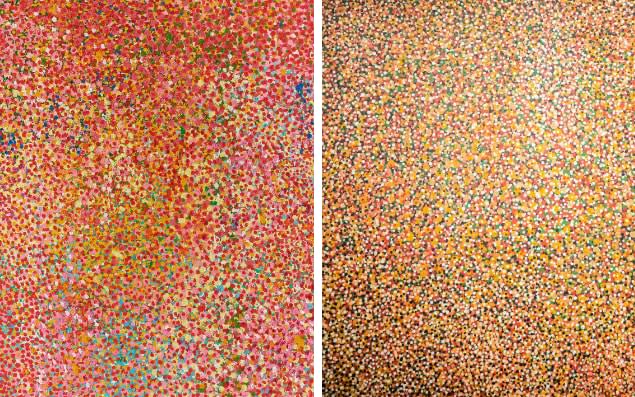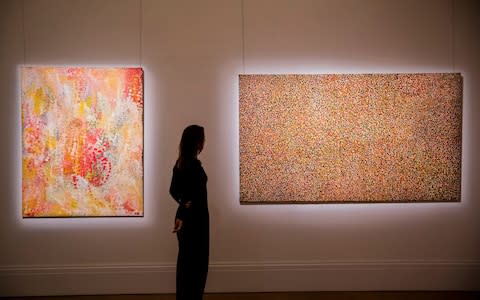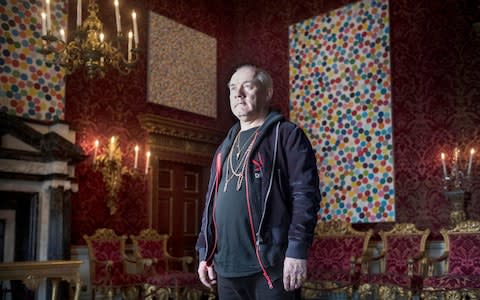Damien Hirst's latest spot paintings 'exactly like my people's story', says Australian artist

An Indigenous artist in Australia has spoken of her “hurt” after suggesting Damien Hirst might have copied the paintings of her people.
The British artist recently sold 24 paintings called the Veil series at the Gagosian Gallery in Los Angeles.
A star-studded crowd, including Kanye West, Michael Douglas, and Tom Ford, turned out for the exhibition, with the paintings’ prices ranging from $500,000 to $1.7 million (£356,000- £1.2 million).
Hirst said the spot paintings were inspired partly by French Post-Impressionists Georges Seurat and Pierre Bonnard.
But Barbara Weir, a traditional painter from the internationally renowned Utopia community in Alice Springs, said the artwork bore a striking resemblance to the paintings of her aunt Polly Ngale and Emily Kame Kngwarreye, a pioneer of contemporary Indigenous art.
"It actually hurts very much because shouldn't people, if they're artists themselves, they shouldn't be doing something that belongs to someone else," Ms Weir told ABC News.

"The one that (we're) talking about is done exactly like my people's story. It was done by Emily and Polly Ngale. If he did copy that, he had no right.
"It looked too much like Utopia art.”
A spokeswoman told the broadcaster that the Veil paintings were, "inspired by Pointillist techniques and Impressionist and Post-Impressionist painters such as Bonnard and Seurat”.
"Damien was unaware of the work or artist in question but he has huge respect for the importance of the value of art in all cultures," the spokeswoman said.
Emily Kngwarreye, who died in 1996, is Australia’s most successful Indigenous artist.

Her paintings have been displayed and sold around the world, and Elton John sold her My Country artwork for A$500,000 (£272,000) in July last year.
Bronwyn Bancroft, an Indigenous artist and an Arts Law Centre board member, also told ABC News she believed it was "obvious" Hirst's work had been influenced by Aboriginal art.
"I was a little bit shocked when I saw them cause I thought they could have been passed [off] as some Utopian work," she said.
"You can't actually copyright style … [but] in many ways it's what's called a moral copyright element.”
Hirst turned art on its head in 1991 by exhibiting a shark in formaldehyde. His latest series are an expansion of his Spot Paintings of the early Nineties, comprising rows of randomly selected coloured dots on clinical white grounds.